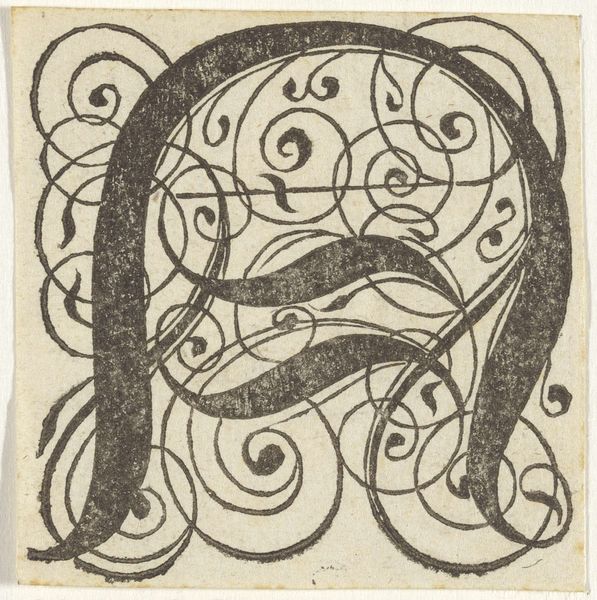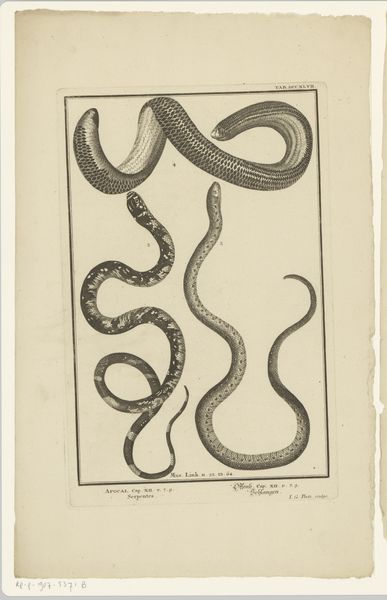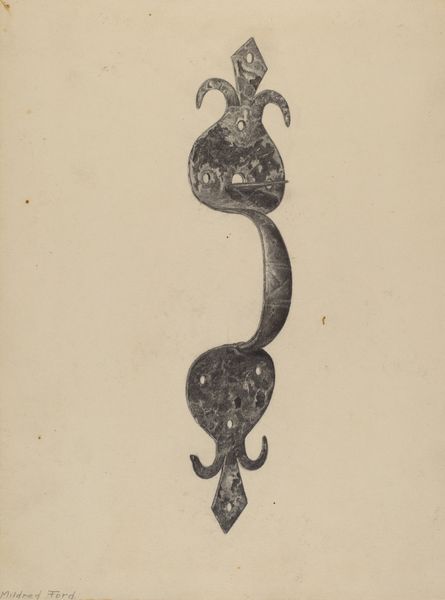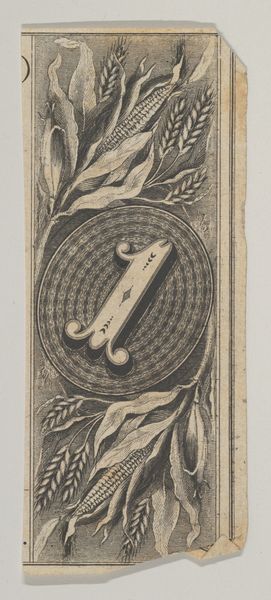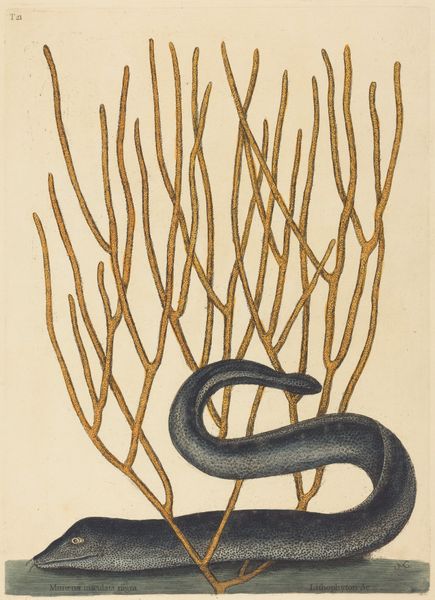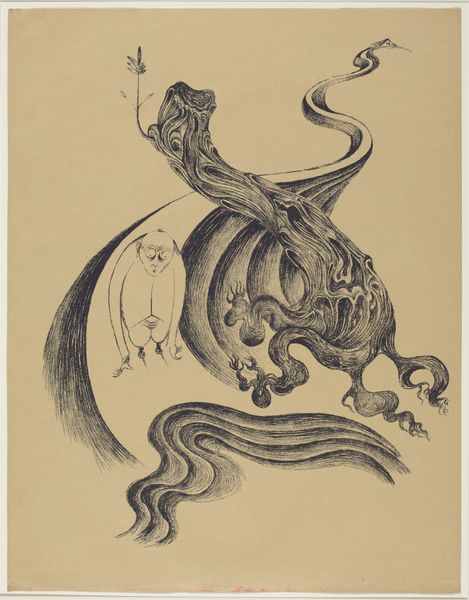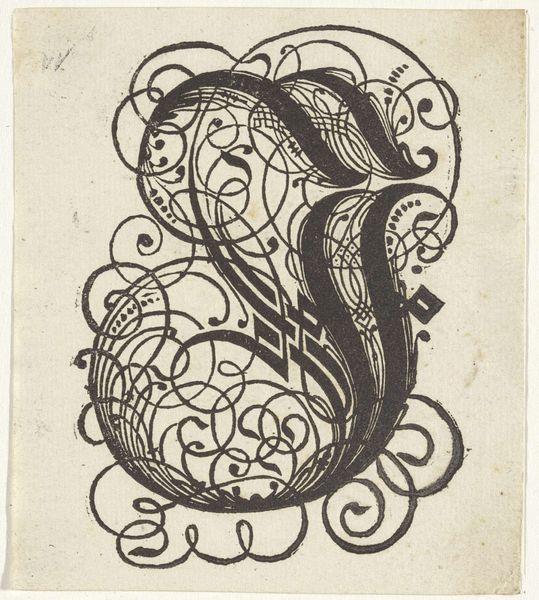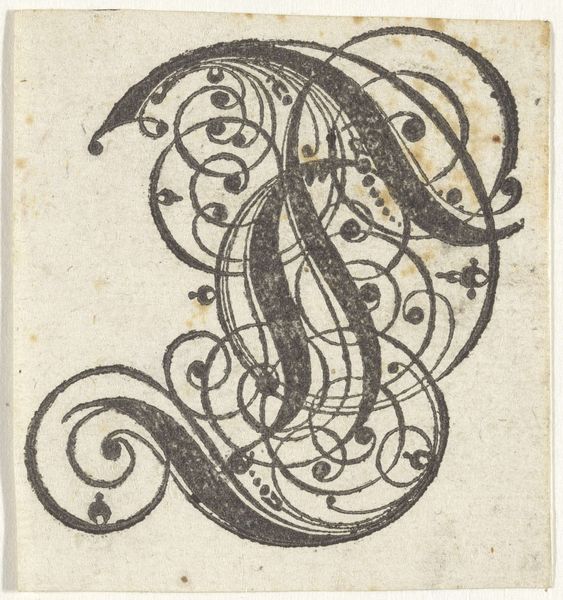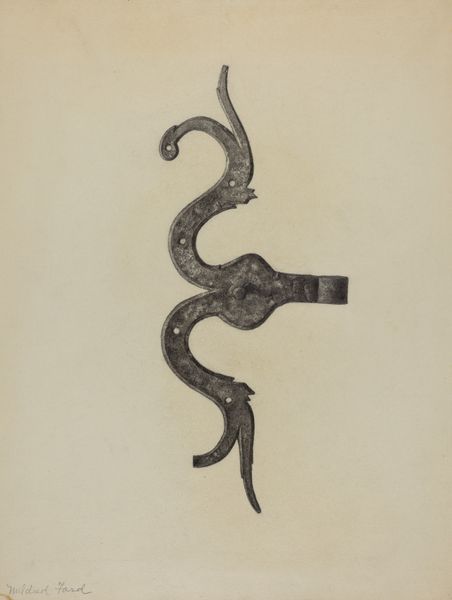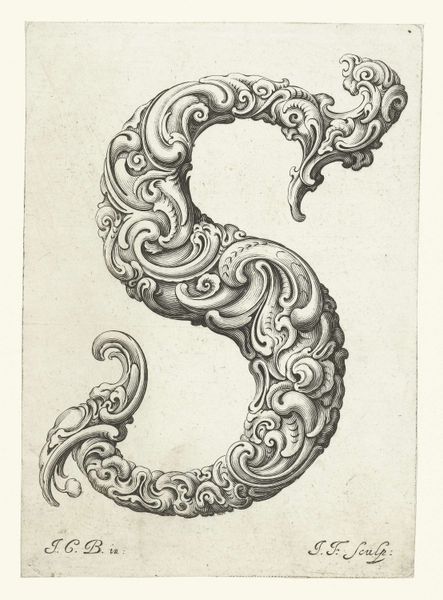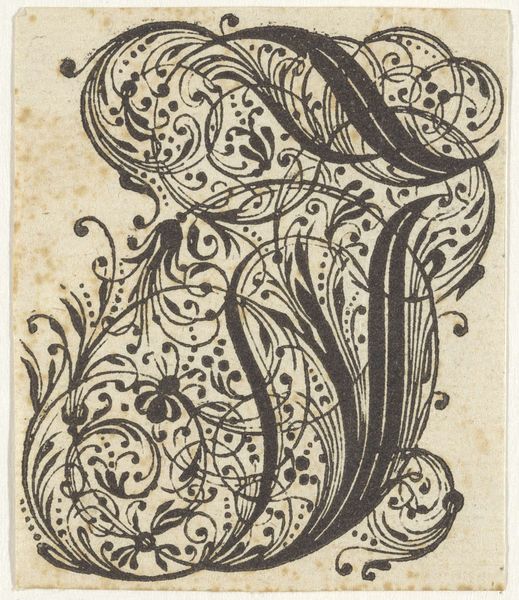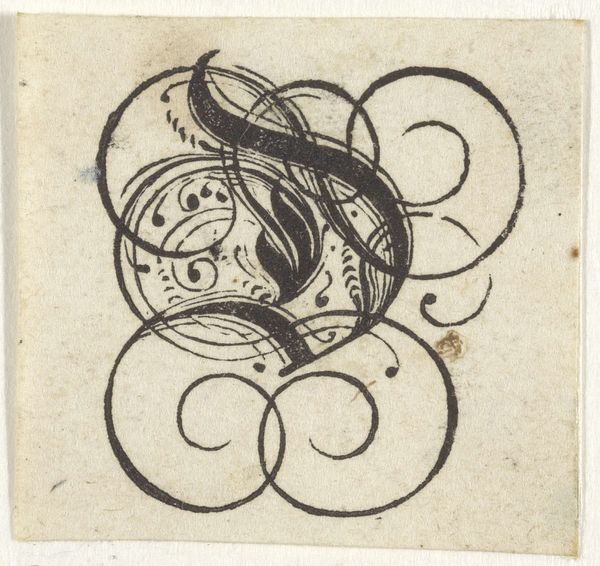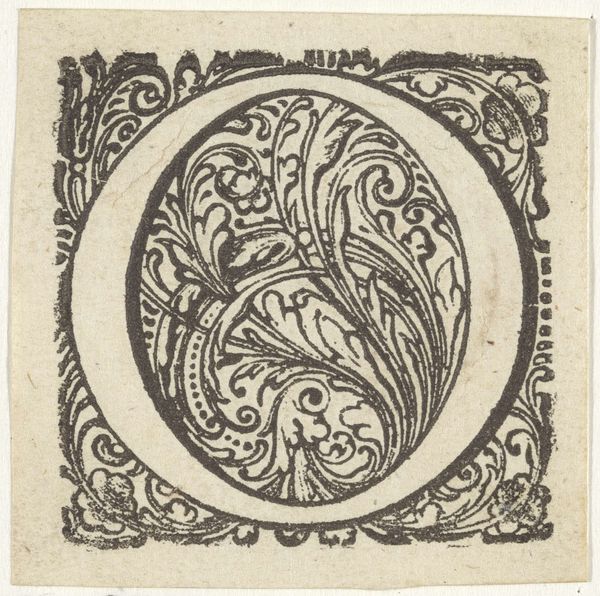
Banknote motif: the number 3, its interior composed of lathe work edged with a band of black 1819 - 1847
0:00
0:00
drawing, graphic-art, print, engraving
#
drawing
#
graphic-art
# print
#
geometric
#
engraving
Dimensions: sheet: 1 3/8 x 1 in. (3.5 x 2.6 cm)
Copyright: Public Domain
Curator: We’re looking at a work titled "Banknote motif: the number 3, its interior composed of lathe work edged with a band of black" by Cyrus Durand, created sometime between 1819 and 1847. It's currently held at the Metropolitan Museum of Art. Editor: It's strangely mesmerizing! The graphic quality, this swirling pattern encased in the numeral - almost like an Escher design gone monetary. Curator: Precisely. Durand was known for his engraving, and this piece exemplifies the artistry involved in securing currency. It speaks volumes about the trust placed in detailed, reproducible images to prevent counterfeiting. Editor: So, this 'lathe work' inside, that almost looks like guilloché...it was functional art meant to defend against fraud? And to reinforce social hierarchies bound to the capitalist monetary system? Curator: Yes, these intricate patterns, technically called lathe work, were incredibly difficult to replicate manually. The act of engraving became a statement about authority and the control of value within the early American economy. Think about it: images are used to maintain control and legitimacy. Editor: Absolutely. And the number itself. Three as a symbolic power - like the Trinity or the power of three to persuade in politics. The imagery itself attempts to embed this trust and control into the cultural understanding of monetary transaction, framing those transactions as moral and almost sacred. Curator: I hadn't considered the broader semiotic value. Though perhaps unintentionally, this "number 3" carries potent social meanings from various cultural narratives that would have subtly influenced its reception at the time. Editor: Fascinating how a piece seemingly devoted to practical application is so thoroughly enmeshed with social, cultural, and political significance. I keep thinking about what 'value' meant then, who had it, and what determined it - physically and conceptually. Curator: Indeed. Durand's work pushes us to reflect on the labor of creating a reliable financial system. It highlights an era where artistry became synonymous with trustworthiness. Editor: This definitely made me question our assumptions about what constitutes "art" and the implicit social contract behind monetary representation. Thanks for bringing new insights to the surface!
Comments
No comments
Be the first to comment and join the conversation on the ultimate creative platform.
